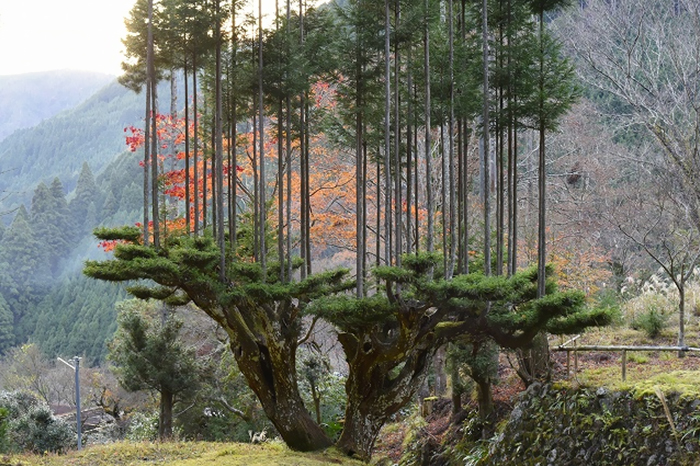Daisugi is a centuries-old forestry technique developed in Japan as a way of cultivating the highly-prized Kitayama Cedar without actually using any land. Today, the visually-striking technique can be witnessed in ornamental gardens.
Dating back to the 14th century, daisugi allowed for the cultivation of Kitayama cedar, a species of tree known for growing exceptionally straight and lacking knots, in a time when high demand and lack of straight land for planting enough trees made growing Kitayama cedars impossible. Similar to the famous art of bonsai, daisugi basically involved heavily pruning a so-called “mother cedar tree” so that only the straightest shoots are allowed to grow. Careful hand-pruning is conducted every couple years, leaving only the top boughs and ensuring that the shoots remain knot free. After about 20 years, the now massive shoots can either be harvested as exceptional Kitayama lumber, or replanted to repopulate forests.

Photo: Wrath of Gnon
Two decades may seem like a long time, but daisugi-grown cedars actually grow at an accelerated rate compared to soil-planted ones. Not only that, but this ingenious forestry technique also results in Kitayama lumber that is 140% as flexible as regular cedar, as well 200% as dense/strong.
Daisugi was developed in the 14th century, when the Sukiya-zukuri, an architectural style characterized by the use of natural materials, especially wood. Straight and knot-free Kitayama logs were used as pillars in Sukiya-zukuri houses, but there just wasn’t enough land to grow enough of these trees to meet demand, so daisugi was born.
According to Twitter user Wrath of Gnon, whose tweets on the ancient Japanese forestry technique went viral recently, Kitayama tree stocks could support dozens of straight shoots at a time, and could be used for up to 200 – 300 years, before being worn out. These “mother trees” can still be found in certain areas of Japan, and some of them have trunks about 15 meters in diameter.
Demand for Kitayama cedar died down in the 16th century, so the popularity of daisugi as a forestry technique waned as well. Still, because of its visually striking effect, daisugi can still be witnessed in ornamental gardens around Japan.












